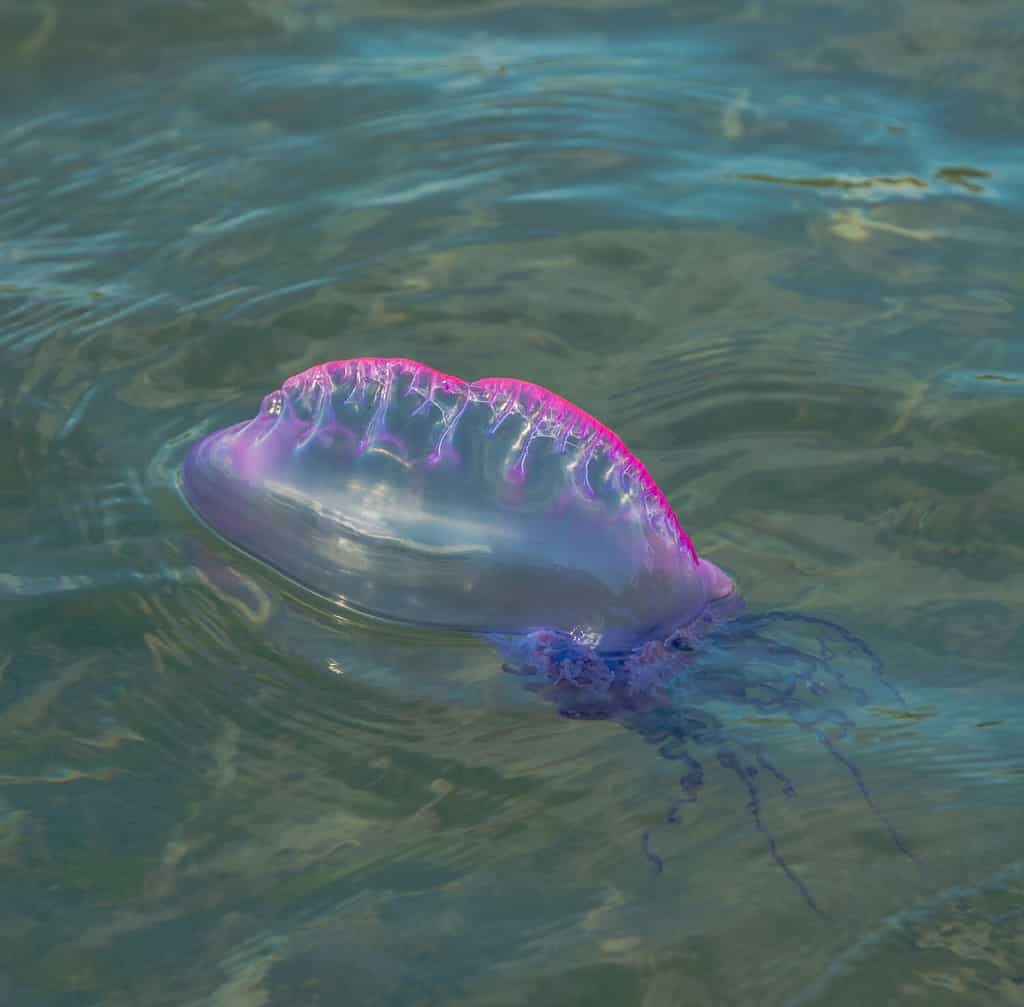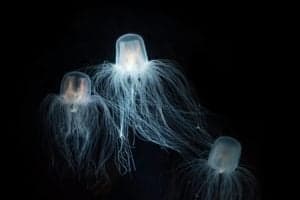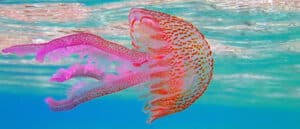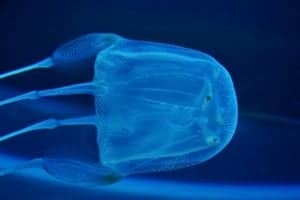When you go to the beach to enjoy a warm summer’s day, the last thing you expect is a dangerous sea creature to wash up on shore! This is exactly what happened when John Whitaker was taking his dog for a walk in Anglesey this week.
The beach at Porth Dafarch was home to a Portuguese man o’ war, which frequently appears in tropical waters. Although they have previously washed ashore, according to Anglesey Sea Zoo, this particular specimen was larger than average.
Portuguese men o’ war can come in a wide range of sizes. They stand out when it comes to the length of their toxic tendrils. These can extend 165 feet beneath the air-filled sack that holds the animal’s primary frame hovering on or near the top of the water.

The Portuguese man o’ war is rarely deadly to humans.
©Broadbelt/Shutterstock.com
Whitaker said, “I had to make sure the dog didn’t get his nose too close. It’s the first time I’d seen one up here, usually the water is too cold.”
Anglesey Sea Zoo’s Frankie Hobro discussed the impact of the temperature shift on Thursday’s BBC Radio Wales Phone In Show. The temperatures were at their peak just over a month ago.
Given that the UK’s total water temperatures are rising due to shifting weather patterns, it is possible that they will see an influx of these tropical species, both more frequently and in bigger sizes.
Occasionally, these creatures are discovered on our coastlines following westerly breezes. Even though they live in the water, Portuguese men o’ war are powerless during strong tides, as they can’t actually swim!
What Is a Portuguese Man o’ War?

Portuguese men o’ war are named after an old wooden ship.
©Pedro Sales Prado/Shutterstock.com
Despite the fact that they are frequently mistaken for jellyfish, siphonophores are simply closely related. Although it seldom kills humans, its sting is incredibly painful and leaves wounds on exposed skin.
They are dreadful predators that use their lengthy, stinging tentacles to ensnare small fish and crabs. You must be cautious of these tentacles as well since they have the potential to sting even after the living thing has passed away.
The tentacles are made up of four distinct “polyps.” These include the body, which resembles a balloon and can expand and contract to control the creature’s depth through the long, deadly tentacles. The digestive system is also a polyp. Lastly, so is their reproductive system.
The beings themselves are quite beautiful. The balloon portion of their body is translucent, while other portions have a pink, blue, and purple sheen. This can make beachgoers drawn to them.
If you see a Portuguese man o’ war on the beach, avoid touching it. Be sure to call local authorities to keep the rest of the community safe!
The photo featured at the top of this post is © Pedro Sales Prado/Shutterstock.com
Thank you for reading! Have some feedback for us? Contact the AZ Animals editorial team.







